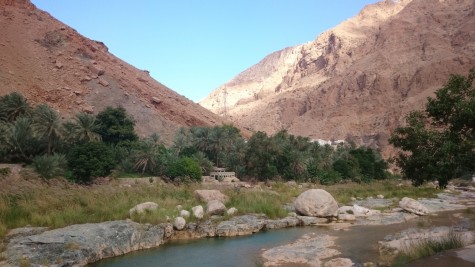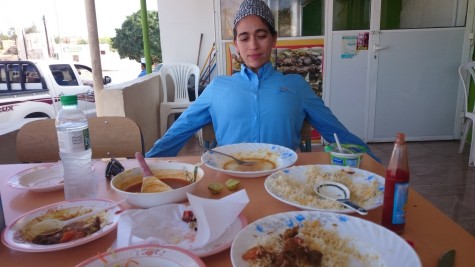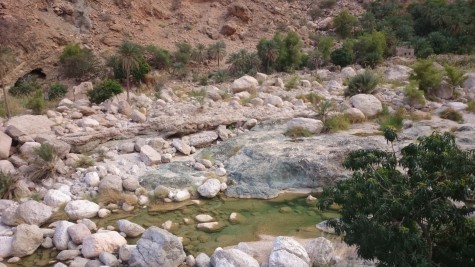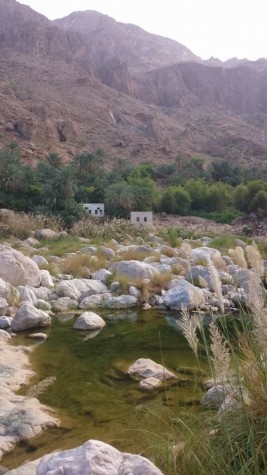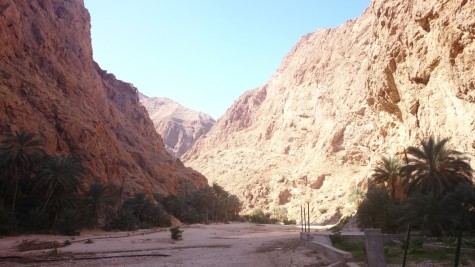We bid good bye to our desert camp and drove towards the Omani coast. We decided not to head straight back to Muscat but instead to spend a day near a few wadis, at the recommendation of a Czech tourist who drove us down from Jebel Shams. Oman has a very unique geological feature. Wadis are a cross between oases and valleys. Like valleys, they are gulches in between two mountains. Like oases, they are fertile and green at the bottom. Like, it’s not just a river a la the Grand Canyon. There are palm trees, fruits, waterfalls, and other lush characteristics that you wouldn’t associate with arid environments.
The village we were staying in was Tiwi, and our AirBnB host was Hussein, conveniently a tour guide at a nearby wadi. We met him at Wadi Shab, where we intended to visit the next day when we had more time. He directed us towards a nearby place for lunch and suggested we take a look at Wadi Tiwi since we were so close. When we were done we could return to Wadi Shab and he would lead us to his house. Sounded like a pretty good plan.
Wadi Tiwi was every bit as beautiful as Hussein described. Several villages were scattered close to the lush valley floor. Apparently we arrived just when the school day ended. As we were walking up the wadi, a seemingly endless conga line of 4WD SUVs began honking their way around the tight corners and curves. Since we were dodging the school caravan more than we were admiring the wadi, we figured we might as well head back to Hussein’s place.
Hussein led us to his house, part of a sub-development above Tiwi. It was built to accommodate the Bedouin, a nomadic people native to the Middle East. But many of them preferred their nomadic ways to a more settled lifestyle, so Omanis like Hussein began to live in the empty sub-developments. Hussein’s wife is Asha, a Danish migrant. We chatted about her experiences in Greenland and the Middle East over tea. Come dinner time, she and Hussein prepared a Danish dinner for us and we shared travel stories.

 Español
Español